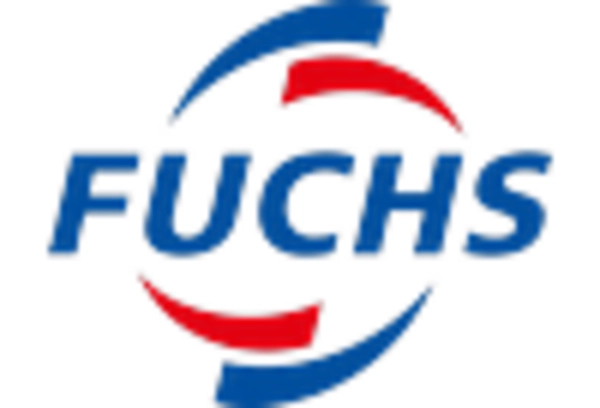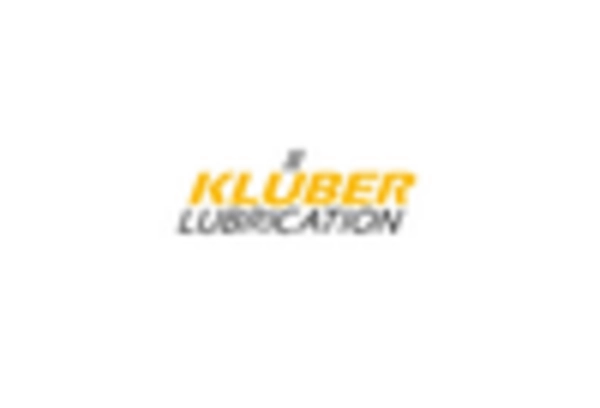Rising Demand in Automotive Sector
The automotive sector is witnessing a notable increase in the demand for polyurea grease, primarily due to its superior performance characteristics. Polyurea grease is recognized for its excellent thermal stability and resistance to water, making it suitable for various automotive applications, including bearings and chassis lubrication. As the automotive industry continues to evolve, with a focus on enhancing vehicle performance and longevity, the polyurea grease market is expected to benefit significantly. Recent data indicates that the automotive grease market is projected to grow at a compound annual growth rate of approximately 4.5% over the next few years, further driving the demand for polyurea-based products. This trend suggests that manufacturers are increasingly adopting polyurea grease to meet stringent performance standards and consumer expectations.
Expansion in Construction Activities
The construction industry is experiencing a resurgence, leading to an increased demand for polyurea grease. This lubricant is favored for its ability to withstand harsh environmental conditions, making it ideal for construction machinery and equipment. As infrastructure projects ramp up, the polyurea grease market is likely to see a surge in usage across various applications, including heavy machinery and equipment maintenance. The construction sector's growth is supported by government initiatives aimed at improving infrastructure, which could potentially lead to a market expansion of around 5% annually. This growth trajectory indicates that polyurea grease will play a crucial role in ensuring the reliability and efficiency of construction operations.
Increased Focus on Equipment Reliability
The emphasis on equipment reliability and maintenance is driving the demand for polyurea grease across various industries. Companies are increasingly recognizing the importance of using high-quality lubricants to minimize downtime and enhance operational efficiency. Polyurea grease is known for its long-lasting performance and ability to reduce friction, which is essential for maintaining the reliability of machinery. As industries strive to optimize their operations, the polyurea grease market is likely to see a rise in adoption rates. Recent studies indicate that effective lubrication can lead to a reduction in maintenance costs by up to 30%, further underscoring the value of polyurea grease in ensuring equipment longevity and performance.
Technological Innovations in Lubrication
Technological advancements in lubrication solutions are significantly influencing the polyurea grease market. Innovations such as the development of high-performance polyurea greases with enhanced properties are becoming increasingly prevalent. These advancements allow for better performance in extreme conditions, which is particularly beneficial for industries such as manufacturing and aerospace. The introduction of synthetic polyurea greases has also contributed to the market's growth, as they offer superior protection against wear and corrosion. Market data suggests that the synthetic grease segment is expected to grow at a rate of 6% per year, indicating a shift towards more advanced lubrication solutions. This trend highlights the importance of continuous innovation in maintaining competitive advantage within the polyurea grease market.
Growing Awareness of Environmental Impact
There is a growing awareness regarding the environmental impact of lubricants, which is influencing the polyurea grease market. As industries seek to adopt more sustainable practices, the demand for eco-friendly lubricants is on the rise. Polyurea greases are often formulated to be less harmful to the environment compared to traditional lubricants, making them an attractive option for companies aiming to reduce their ecological footprint. This shift towards sustainability is supported by regulatory frameworks that encourage the use of environmentally friendly products. Market analysis indicates that the demand for biodegradable lubricants is expected to grow by approximately 7% annually, suggesting that polyurea grease could play a pivotal role in meeting these evolving environmental standards.


















Leave a Comment